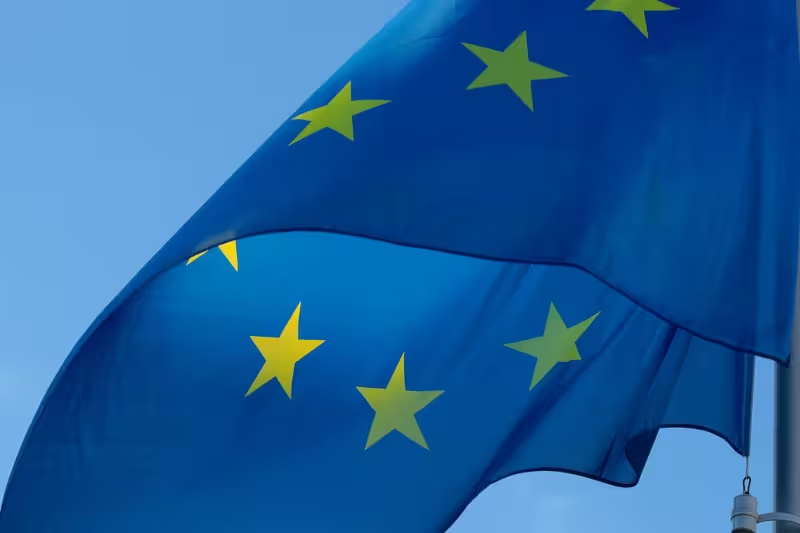SPECIAL EDITION OF THE WORLD PARITY MONITOR
In 2024, the EU introduced significant regulatory changes with the DMA, notably designating Booking.com as a gatekeeper on May 13th. The aim of the regulation on DMA as described by the EU commission is “The Digital Markets Act aims at preventing gatekeepers from imposing unfair conditions on businesses and end users and at ensuring the openness of important digital services”.
Since the World Parity Monitor (WPM) published by 123COMPARE.ME has been tracking OTA pricing strategies in the top 60 tourist destinations in the world since October 2023, we aim to explore whether EU destinations show different trends compared to non-EU ones for Booking.com in regards to their price strategy.
Let’s first review some key dates relevant to the DMA & Booking.com. 1

Exploring OTA Pricing Trends: EU vs. Non-EU Destinations
To analyze these changes we want to answer the following questions:
1. Is Booking.com’s pricing strategy different between EU and Non-EU destinations?
In our WPR, to evaluate this, we use the ‘Beat-Meet-Lose’ KPI, which helps compare hotel direct prices with OTA prices:
- Beat: When hotel direct prices are lower than OTAs prices
- Meet: When hotel direct prices are equal +/- 0.5% to OTA prices
- Lose: When hotel direct prices are higher than OTA prices
The following graphs show some interesting insights on the evolution of price disparities over the past year:

Non EU-Locations

EU-Locations


Initially, Hotels direct prices vs Booking.com had a higher ‘Beat’ rate (i.e., hotels offering cheaper direct prices) in EU locations, with the ‘Lose’ rate (when Booking.com is cheaper) declining since the beginning of 2024. In non-EU destinations, the trend has been stable, with ‘Beat’ rates fluctuating between 40-48%, reflecting short-term market changes or promotions.
In contrast, EU destinations show an upward ‘Beat’ trend, indicating that hotels are increasingly offering better prices than Booking.com. This could be due to more aggressive pricing strategies or stronger demand, allowing hotels to set more competitive direct rates.
A month-by-month analysis of the ‘Lose’ rate reveals a significant difference between the first half (October 2023 – February 2024) and second half (March 2024 – September 2024) of the period. The ‘Lose’ rate began to drop significantly around January 2024 and continued throughout the following months.
2. Is Booking.com’s 2024 trend in the EU different from other OTAs?
Let’s compare Booking.com’s ‘Lose’ rate evolution with other OTAs in EU locations. As seen previously, Booking.com presents a declining trend, other OTAs have shown a more stable trend.

The comparison shows a clear difference between Booking.com’s performance and that of other OTAs. Statistical analysis confirms that Booking.com’s ‘Lose’ rate has evolved differently, suggesting a unique trend compared to the other OTAs.
- This behavior is not observed in Booking.com’s sister brands, Agoda and Priceline, which have maintained stable ‘Lose’ rates.
- When compared directly with other major OTAs (as per impression share), Booking.com’s trend remains distinct.
Having covered ‘Lose’ share 2024 trend evolution, it’s important to do a similar analysis based on major dates regarding DMA deployment and the end of the parity clause.
3. Are these trends in line with Key dates?
On April 24 Booking.com agreed with competition authorities in France, Italy, and Sweden to end its price, availability, and booking conditions. This raises the question: Could we say that this has an impact on the ‘Lose’ rate evolution from April onwards?

A comparison of the ‘Lose’ rate before and after April 20242 shows a statistically significant drop from the point onward. This confirms that there was a significant reduction in the ‘Lose’ rate for Booking.com in France, Italy, and Sweden locations after April 2024.
The implementation of the same provision across all EU countries from July 1st prompts an analysis to determine if the same effect is observed in the totality of UE destinations analysis following the extension of this agreement to all of them.
All UE destinations:
- Average % Lose before July (April, May, June): 16.36%
- Average % Lose after July (July, August, September): 14.10%
While there is a reduction in the ‘Lose’ rate, it is not significant enough to confirm a strong effect for these specific months3. We’ll keep tracking evolution for the entirety of the UE in the following months.
4. What can we expect for price trends in the EU?
From an anti-monopoly regulation perspective, prices are expected to fluctuate more freely, especially with the end of the parity clause. When analyzing price dispersion before and after these changes, we observe that while the price gap between Booking.com and direct hotel prices has slightly increased in favor of direct bookings, the overall price variability or dispersion has remained consistent.

Conclusions
Over the past year, the BML KPI shows that hotels in EU destinations are increasingly offering better prices than Booking.com, resulting in a higher ‘Beat’ rate and a lower ‘Lose’ rate compared to non-EU destinations. While non-EU markets remain competitive, the distribution across BML categories is more balanced, with Booking.com still maintaining a strong presence.
We’ve observed a notable drop in Booking.com’s ‘Lose’ rate within the EU, which contrasts with other OTAs (including those under Booking Holdings) as well as its performance in non-EU markets. Given that our data covers a full year in the highly seasonal hospitality sector, and considering the diverse market dynamics across various locations, this distinct behavior can be attributed to three key factors:
- Regulatory Environment: Stricter EU regulations, particularly on OTA parity clauses, may have given hotels more flexibility to set direct prices.
- Market Dynamics: The EU market might be more competitive, with higher demand and a dense concentration of hotels, prompting more aggressive pricing strategies by hotels to attract direct bookings.
- Consumer Behavior: EU consumers might be more price-sensitive or inclined to book directly with hotels, further influencing the trends in this region.
Since all players are subject to similar market dynamics and consumer behavior, and given that Booking.com is specifically targeted by the DMA regulation, the regulatory changes in the EU seem to be the primary driver behind these shifts. Mainly for these 3 reasons:
- Regulatory impact: The DMA regulation specifically targets Booking.com, making regulatory changes in the EU the likely primary driver of the observed shifts.
- Strategic evolution: Booking.com’s strategy has evolved uniquely in response to these changes, setting it apart from other OTAs, including those within the Booking group.
- EU vs non-EU: The distinct behavior of Booking.com in EU destinations, compared to non-EU markets, underscores the influence of these regulatory changes.
With the facts laid out, let’s now provide some final thoughts to conclude.
We don’t think the DMA is likely to bring a significant short-term boost to the hotel direct channel. While there’s a clear pricing impact on Booking.com, the platform’s dominance and retention tools (like Genius discounts, not reflected in public prices) make a major drop in market share unlikely. In fact, a negative side-effect of the DMA on the direct channel is emerging: its impact on the Google Travel search portal is making it harder for users to access this portal, which is known to be more user-friendly for direct hotel bookings, and is channeling traffic to the general search, where larger sites like those of OTAs gain more relevance. We will continue monitoring these developments to determine whether this is a short-term adjustment or a longer-term trend.
- Booking, ByteDance and X notified that they meet gatekeeper thresholds under Digital Markets Act (see announcement here)
https://digital-markets-act.ec.europa.eu/commission-designates-booking-gatekeeper-and-opens-market-investigation-x-2024-05-13_enhttps://news.Booking.com/en/bookingcom-to-amend-parity-provisions-throughout-europe/[↩]
- T-statistic: 5.565.565.56
P-value: 0.000350.000350.000[↩]
- T-statistic: 1.68 P-value: 0.0963
The p-value is greater than 0.05, which means that the difference in the ‘% Lose’ rate between the two periods is not statistically significant at the 5% level.[↩]








